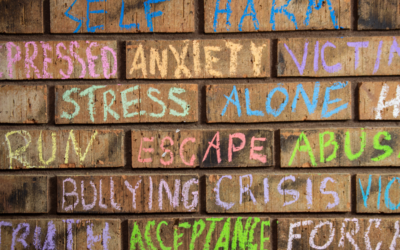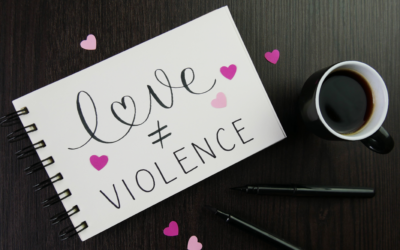Panic is an intense and overwhelming emotion characterized by a sudden surge of fear and anxiety. It can manifest in various situations and can be triggered by real or perceived threats, leading to a fight-or-flight response in the body. Panic can be a normal reaction to certain circumstances, but when it becomes recurrent or interferes with daily life, it may indicate an underlying anxiety disorder that requires attention and treatment.
Panic attacks can strike suddenly, overwhelming individuals with a wave of intense fear and anxiety. These episodes can leave individuals feeling trapped, helpless, and physically exhausted. Understanding panic attacks and their effects is crucial for finding effective ways to cope and regain control. In this blog post, we explore the nature of panic attacks, their potential triggers, and practical strategies for managing and overcoming them. Whether you’re seeking guidance for yourself or someone you know, this resource will provide valuable insights to navigate the challenging world of panic attacks and pave the way toward healing and a renewed sense of well-being.
What is a Panic Attack?
A panic attack is a sudden surge of intense anxiety accompanied by a range of distressing physical and psychological symptoms. These episodes usually reach their peak within minutes and can be extremely distressing. Common symptoms include accelerated heart rate, shortness of breath, chest pain, trembling, dizziness, sweating, and a sense of impending doom or loss of control.
Emotional Symptoms
Intense Fear
Panic attacks are often characterized by an overwhelming sense of fear or terror. This fear may be irrational and disproportionate to the actual situation at hand. Individuals may feel a sense of impending doom or a fear of losing control, which can heighten their anxiety.
Overwhelming Anxiety
Panic attacks are accompanied by a surge of anxiety that can be difficult to manage. Individuals may experience a sense of extreme unease, restlessness, and a constant worry that something terrible is about to happen. The anxiety can feel all-consuming, making it challenging to focus on anything else.
Emotional Vulnerability
Panic attacks can leave individuals feeling vulnerable and emotionally drained. They may feel a sense of helplessness, shame, or embarrassment due to the intensity of their emotional and physical reactions. After the panic attack subsides, individuals may experience a range of emotions such as sadness, frustration, or a lingering sense of anxiety.
Physical Symptoms
Accelerated Heartbeat and Chest Discomfort
One of the hallmark physical symptoms of a panic attack is a rapid heartbeat or palpitations. Individuals may feel as if their heart is racing or pounding in their chest. This can be accompanied by chest tightness, discomfort, or a sensation of pressure, leading some to mistake it for a heart attack.
Shortness of Breath and Hyperventilation
Many individuals report difficulty breathing or a sensation of being unable to catch their breath during a panic attack. This can lead to rapid, shallow breathing or hyperventilation, which can exacerbate feelings of anxiety and intensify other physical symptoms.
Sweating, Trembling, and Dizziness
Panic attacks often trigger excessive sweating, especially in the palms and underarms. Individuals may also experience trembling or shaking, particularly in their hands or limbs. Additionally, dizziness or lightheadedness can occur, accompanied by a feeling of unsteadiness or a fear of fainting.
Other physical symptoms
Other symptoms that can manifest during a panic attack include nausea, stomach discomfort, hot or cold flashes, tingling or numbness in the extremities (hands, fingers, toes), and a feeling of being detached from oneself or reality.
Recognizing Panic Attack Triggers
Identifying the triggers that can lead to panic attacks is an important first step in managing and preventing future episodes. By recognizing individual triggers, individuals can take proactive measures to minimize their impact. It is essential to note that these triggers can differ from person to person. For some, it might be stressful situations like public speaking, while for others, it could be a phobia of closed spaces.
Traumatic experiences like physical or emotional abuse, major life changes like a divorce or job loss, caffeine or drug use, and certain medical conditions can also trigger panic attacks. Therefore, it is crucial to identify these triggers and take the necessary steps to manage them. Some proactive measures individuals can take include exercising regularly, getting enough sleep, practicing relaxation techniques like meditation or yoga, and avoiding triggers as much as possible.
The Role of Anxiety Disorders
Anxiety disorders play a significant role in the occurrence of panic attacks. Here are three key aspects of their relationship:
Connection to Anxiety Disorders
Panic attacks are commonly linked with anxiety disorders, including panic disorder, social anxiety disorder, generalized anxiety disorder, or specific phobias. Although panic attacks can happen to people without an anxiety disorder, the chances are higher when there is an underlying condition of anxiety.
Panic Disorder
Panic disorder is a specific anxiety disorder characterized by recurrent and unexpected panic attacks. Individuals with panic disorder often live in constant fear of experiencing future panic attacks, leading to significant distress and a negative impact on their daily lives. The fear of having panic attacks can even lead to the development of agoraphobia, which is the avoidance of places or situations where escape may be challenging in the event of a panic attack.
Cycle of Fear and Avoidance
Dealing with panic attacks can lead to a never-ending cycle of fear and avoidance. Those who have experienced these attacks may become anxious about having another one, which can intensify their fear and cause them to avoid certain situations or triggers. This avoidance can limit their daily activities and overall quality of life, aggravating their anxiety and perpetuating panic disorder.
However, there are strategies and techniques that can help manage panic attacks and break the cycle of fear and avoidance. Seeking professional help, practicing relaxation techniques, and gradually facing and overcoming feared situations can all be effective ways to improve the condition and regain control over one’s life.
It is worth noting that while anxiety disorders and panic attacks are closely connected, not all individuals who experience panic attacks have an anxiety disorder. However, the presence of an anxiety disorder can increase the likelihood and frequency of panic attacks.
Coping Strategies During a Panic Attack
When you experience a panic attack, it can be scary. But there are ways to feel more in control. Coping methods can help you manage panic attacks. There are different strategies to choose from, like grounding techniques, relaxation exercises, self-care practices, and seeking help from professionals. These methods can help you take action and reduce the symptoms of panic attacks.
Deep Breathing
Practice deep, slow breaths to regulate your heart rate and promote relaxation.
Deep breathing, also known as diaphragmatic breathing or belly breathing, is a relaxation technique that involves taking slow, deep breaths to promote physical and mental relaxation. It involves breathing deeply from the diaphragm, the muscle located below the lungs, rather than shallowly from the chest.
During deep breathing, individuals inhale deeply through their nose, allowing their abdomen to expand as they fill their lungs with air. They then exhale slowly and gently through their mouth, allowing the abdomen to contract. The focus is on the sensation of the breath moving in and out of the body and consciously regulating the breath to promote relaxation.
Grounding Techniques
Grounding techniques are helpful strategies that can help individuals experiencing panic attacks to reconnect with the present moment and regain a sense of stability.
5-4-3-2-1 Technique
Engage your senses by focusing on:
– Identify five things you can see around you.
– Acknowledge four things you can touch or feel.
– Notice three things you can hear in your environment.
– Pay attention to two things you can smell or the scent in the air.
– Recognize one thing you can taste or the taste lingering in your mouth.
Grounding Objects
Carry a small object with you that you find comforting or meaningful. It could be a smooth stone, a special keychain, or a piece of jewelry. When you feel anxious or panicky, hold the object in your hand and focus on its texture, weight, and any associated positive memories or feelings. This can help anchor you to the present moment and provide a sense of security.
Counting or Mental Arithmetic
Engage your mind by counting or performing mental arithmetic exercises. For example, count backward from 100 by threes or recite the alphabet backward. This helps shift your focus away from panic and towards a task that requires concentration.
Mindfulness Meditation
Engage in a brief mindfulness meditation practice by focusing your attention on the present moment without judgment. Observe your thoughts, feelings, and physical sensations as they arise, and let them pass without getting caught up in them. Guided mindfulness meditation apps or recordings can be helpful for beginners.
To practice mindfulness meditation, find a quiet space where you can sit comfortably. Close your eyes or have a soft gaze. Focus on your breath, noticing the sensation of each inhalation and exhalation. When thoughts arise, acknowledge them without judgment and gently return your attention to the breath. Expand your awareness to include other sensations in your body and the environment. Practice non-judgmental observation of thoughts, emotions, and bodily sensations. End the session with gratitude. Start with shorter sessions and gradually increase the duration. Be patient and kind to yourself as you cultivate mindfulness through regular practice.
Progressive Muscle Relaxation (PMR)
PMR involves tensing and releasing different muscle groups in the body to promote relaxation. Starting from your toes, gradually tense and then relax each muscle group, working your way up to your head. Focus on the sensation of tension and release in each muscle, which can help release physical tension and reduce anxiety.
Progressive muscle relaxation (PMR) is a technique that involves tensing and relaxing different muscle groups in the body to promote relaxation. Here’s how you can practice PMR:
1. Find a quiet and comfortable space where you can lie down or sit in a relaxed position.
2. Start with deep, slow breaths to help calm your mind and body.
3. Begin with a specific muscle group, such as your hands or feet. Tense the muscles in that group as tightly as you can, while keeping the rest of your body relaxed.
4. Hold the tension for a few seconds, around 5-10 seconds, and pay attention to the sensations of tension in the muscles.
5. Release the tension suddenly and completely, allowing the muscles to relax completely. Focus on the sensation of relaxation and notice the contrast between tension and relaxation.
6. Take a few deep breaths and move on to the next muscle group. Gradually work your way through different muscle groups, moving up from your feet to your legs, abdomen, arms, shoulders, neck, and face.
7. As you progress through each muscle group, repeat the process of tensing and relaxing for a few seconds before moving on.
8. Continue practicing PMR for about 10-15 minutes, or until you feel a sense of relaxation and calmness.
Remember to pay attention to your body and avoid any movements or positions that cause pain or discomfort. It’s normal to feel a little bit of muscle fatigue after the exercise, but if you experience any discomfort, adjust the intensity of muscle contraction according to your comfort level.
Seeking Professional Help
If panic attacks are disrupting your daily life or causing significant distress, it is crucial to seek professional help. Mental health professionals, such as therapists or psychiatrists, can offer personalized strategies and interventions to manage panic attacks effectively. They may recommend therapies such as cognitive-behavioral therapy (CBT) or prescribe medication when appropriate.
Panic attacks can be distressing and disruptive, but they are manageable with the right strategies and support. By understanding the nature of panic attacks, identifying triggers, adopting coping techniques, seeking professional help, and prioritizing self-care, individuals can regain control and live a fulfilling life free from the grip of fear. Remember, you are not alone, and there is hope for a brighter future.










